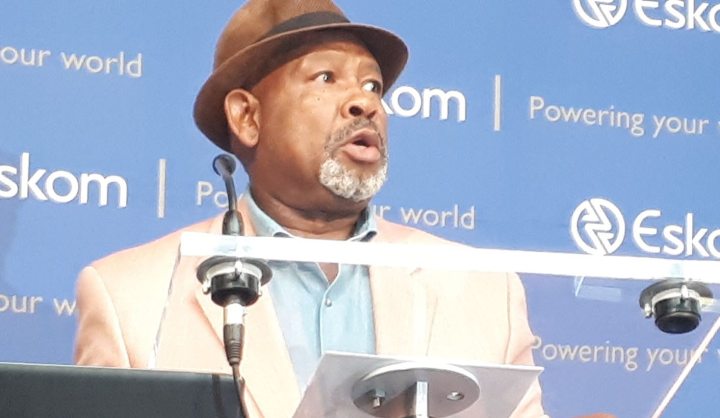South Africa
Op-Ed: Ten key takeaways from the Eskom 2017/18 interim financial results

A refreshing honesty and frankness in dealing with the critical issues facing the utility was revealed by new Eskom chairman Jabu Mabuza and acting CEO Phakamani Hadebe at the long awaited and delayed Eskom interim financial results presentation for the six-month period ending 30 September 2017. By CHRIS YELLAND.
Eskom’s interim financials revealed a decline in all financial metrics compared to those of the same period for the previous financial year, with sales revenue declining by 2% to R95.5-billion, operating costs remaining flat at R66,7-billion, net cash generated from operations declining by 30% to R22-billion, net finance costs increasing by 53% to R10-billion, and net profit after tax declining by 34% to R6.3-billion.
Eskom’s financial position for the second half of the financial year ending 31 March 2018 traditionally worsens significantly, with lower sales revenue and higher maintenance costs than in the first half. Eskom’s year-end financials are therefore expected to reflect a significant net loss position.
The release of Eskom’s interim financial results follows the recent liquidity crisis at the utility, the downgrade of Eskom’s credit rating by ratings agency, Moody’s, from B1 to Ba3, and concerns by banks, financial institutions and lenders in respect of the “going concern” status of Eskom as reflected by its apparent inability to meet loan capital and interest repayments from operating income for the months ahead.
The liquidity crisis was attributed to poor leadership and governance by the previous Eskom chairman, board and executive management, with perceptions of maladministration and corruption by the financial community leading to difficulties in Eskom rolling over existing debt, obtaining bridging finance and raising new debt.
Energy analyst Chris Yelland breaks down the Eskom results
Ten key takeaways from the Eskom 2017/18 interim financial results are as follows:
- Eskom’s operational performance is satisfactory and stable. While there is room for improvement, Eskom is generating, transmitting and distributing electricity, maintenance is being done, and key operating performance metrics are positive.
- As things stand, Eskom is not financially sustainable, with net cash generated from operations unable to service loan capital and interest repayments. Eskom’s capital structure, levels of debt and equity, and operating costs require urgent attention.
- Eskom’s sales revenue is declining, with price increases offset by declining sales volumes. Operating costs, depreciation and amortisation are stable, while net finance costs increased by 53%, resulting in net profit after tax dropping by 34%.
- Delayed revenue clawbacks via the regulatory clearing account (RCA) mechanism, coupled with significantly lower than expected price increases allowed by NERSA, rising municipal arrears debt, and only 54% of budgeted loan funding raised due to governance issues, has resulted in the current liquidity crisis.
- The appointment of a credible new chairman, board and acting CEO at Eskom has relieved pressure from bankers, financial institutions and lenders, and R20-billion of bridging finance is now expected become available to meet the utility’s February 2018 debt servicing needs.
- Eskom’s financial position for the second half of the 2017/18 financial year traditionally worsens significantly, with lower sales revenue and higher maintenance costs than in the first half. The utility’s year-end financials are therefore expected to reflect a net loss.
- Eskom is not in an environmentally sustainable position, with several of its coal-fired power stations operating outside South Africa’s environmental compliance limits. No provisions for compliance upgrades, life extensions, decommissioning of old coal-fired power stations, or new-build beyond Medupi and Kusile, are visible.
- There is no apparent progress in concluding power purchase agreements (PPAs) with independent power producers (IPPs) in terms of Bid Windows 3.5, 4 and 4.5 of the Department of Energy’s Renewable Energy IPP Procurement Programme (REIPPPP). With political change in progress, the new Integrated Resource Plan (IRP) for electricity and REIPPPP appears to be in limbo.
- While dealing with the immediate governance and liquidity crises, strategic, capital, operating and other structural issues are being pushed back and delayed, with environmental sustainability likely to become the sacrificial lamb in the achievement of financial and operational sustainability.
- Eskom’s ambitions to build, own and operate a new nuclear fleet appear to be over. The Eskom CFO flatly contradicted former Eskom CEO Brian Molefe’s earlier position that the nuclear new-build could be funded on Eskom’s balance sheet, without burdening the Treasury. DM
For full information on Eskom’s 2017/18 interim financial results for the period ending 30 September 2017, follow this link
Chris Yelland is investigative editor, EE Publishers
Photo: Eskom chairman, Jabu Mabuza















 Become an Insider
Become an Insider